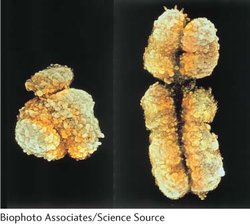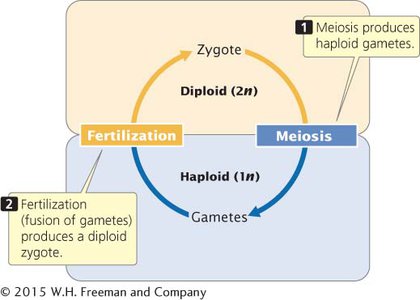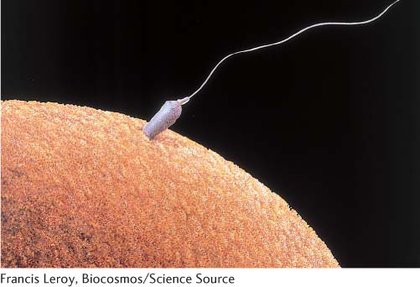4.1 Sex Is Determined by a Number of Different Mechanisms
One of the first extensions of Mendel’s principles is the pattern of the inheritance of characteristics encoded by genes located on the sex chromosomes, which often differ in males and females (Figure 4.1). To understand the inheritance of sex-

Sexual reproduction is the formation of offspring that are genetically distinct from their parents; most often, two parents contribute genes to their offspring, and those genes are assorted into new combinations through meiosis. Among most eukaryotes, sexual reproduction consists of two processes that lead to an alternation of haploid and diploid cells: meiosis produces haploid gametes (or spores in plants), and fertilization produces diploid zygotes (Figure 4.2).

The term sex refers to sexual phenotype. Most organisms have only two sexual phenotypes: male and female. The fundamental difference between males and females is gamete size: males produce small gametes, called sperm; females produce relatively large gametes, called eggs (Figure 4.3).

77
We define the sex of an individual organism in reference to its phenotype. Sometimes an individual organism has chromosomes or genes that are normally associated with one sex but an anatomy corresponding to the opposite sex. For instance, the cells of female humans normally have two X chromosomes, and the cells of males have one X chromosome and one Y chromosome. A few rare persons have male anatomy although their cells each contain two X chromosomes. Even though these people are genetically female, we refer to them as male because their sexual phenotype is male. (As we will see later in the chapter, these XX males usually have a small piece of the Y chromosome that is attached to another chromosome.) The mechanism by which sex is established is termed sex determination. Sex may be determined by differences in specific chromosomes, by genotypes, or by environmental factors.
CONCEPTS
In sexual reproduction, two parents contribute genes to produce an offspring that is genetically distinct from both parents. In most eukaryotes, sexual reproduction consists of meiosis, which produces haploid gametes (or spores), and fertilization, which produces a diploid zygote.
 CONCEPT CHECK 1
CONCEPT CHECK 1
What process causes the genetic variation seen in offspring produced by sexual reproduction?
Meiosis